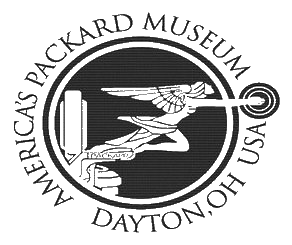1951 200 Club Sedan
327 cu in. straight eight. 165 BHP @ 3600 rpm. 295 lb/ft torque @ 2000 rpm. 3 speed manual transmission. Hydraulic drum brakes. 122” wheelbase. Curb weight 3600 lbs. $2,416 when new. On loan courtesy of Robert E. Signom II.
Jean Trevoux had piloted several Packards in the Carrera Panamericana II, a dangerous border to border race than spans the entire length of Mexico. In November 1951 he raced a Packard 1951 200 Club Sedan and came in fifth overall, with help from his teenage mechanic Pablo Merrigan. What the car lacked in agility it more than made up for in raw power.
In 1995 Pablo completed restoration of this car with its original livery and equipment allowing its entrance into the newly re-established infamous race. The car sits now having battered almost ten thousand miles of racing after running the 1996, ‘97, ‘98, and 1999 races.
The car is maintained in running condition and is actively raced.
In 1951… First Burger King opens. Godzilla debuts in Tokyo, Japan. Marilyn Monroe marries Joe DiMaggio. Cost of a house: $9,000. Average income: $3,510. Gallon of gas: $0.19. Average new car: $1,500.
Born to Race Over 4 Decades: 1951 200 Club Sedan
Known worldwide in its initial stage as The Mexican Road Race, the automobile sports competition would later be named La Carrera Panamericana. La Carrera, is a rally-type sporting event, classified as one of the most important of its kind, as well as being the longest in the world, even surpassed the Mile Miglia and Targa Florio races in Italy. La Carrera Panamericana history is divided into two stages, the first is the original races from 950 to 1954, where great drivers participated, on vehicles with renowned European brands such as Ferrari, Osca, Lancia, Mercedes, Porsche or Maserati, in addition to the North American Ford Oldsmobile, Hudson, and Packard. In 1954, the fifth and last race of the old era was held, as the Mexican government decided to cancel the event, for safety reasons after the tragic incident at the 24 Hours of Le Mans in France, in 1955. It took just over three decades for the legend to be revived in 1988, giving birth to the second era of La Carrera, which we have celebrated uninterruptedly to date. CREDIT: La Carrera Panamericana official site.

